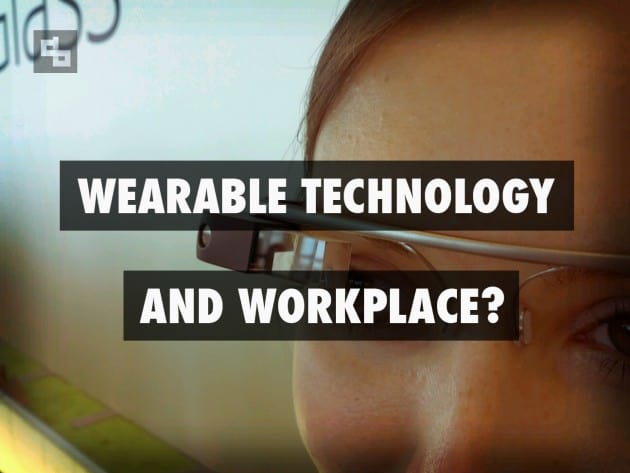Wearable technology – portable gadgets capable of tracking our physical activity, our sleeping patterns, and our health – has seen rapid growth in recent years, and not just for fitness purposes. These devices have begun to filter into the workplace as the corporate world investigates if wearables can increase productivity, especially after the launch of Salesforce Wear – the industry’s first initiative for wearable computing.
Wearable Technology In The Workplace
A study by Goldsmiths College has found that wearable technology boosts employee productivity by 8.5%, saying the results show that ‘cloud technology is powering the wearable technology revolution – providing rich insights from big data and giving firms, employees, and consumers information they can use to make positive changes to performance.’

What this ‘revolution’ actually means will depend on the business, and how they are utilising wearable tech. For workers in the field – technicians, labourers, even those in the medical profession – this ability to access data and information relatively hands-free could be incredibly beneficial. For sales and marketing professionals, this means instant access to vital client statistics. For those in the retail industry, this means store, product, and payment information at their fingertips for quicker and better customer interaction.
Another potential bonus for professional wearable tech is its employee tracking ability. Managers would be able to monitor their team members, provide more useful, tailored feedback, and use that information to streamline operations on a larger scale.
But at what point does this become too invasive? Imagine taking a quick smoke break or going up to the office kitchen to make a cup of tea. The average 9-to-5 worker cherishes these miniscule breaks; they allow us to take a deep breath before heading back to our desks to answer that email or finish that report. But with wearable tech, these moments of disconnect won’t be possible, unless you physically take off the device (which would defeat the purpose entirely…)
And will this constant connectivity be as beneficial as intended? A study by an assistant professor at Harvard Business School explored the ‘transparency paradox’ – where workers’ productivity may actually decrease under continual observation. People perform differently when they know they’re being watched, and this could produce less than desirable outcomes. Factoring in the huge novelty factor of wearables, employees might become too preoccupied with checking their progress on a cool new gadget that they don’t focus on their assigned tasks.
As Indro Mukerjee, CEO of flexible electronics company Plastic Logic, predicted, ‘2014 will be the year that wearable technology starts to go mainstream.’ This couldn’t be more accurate, with all the innovation we’ve seen this year, and the highly anticipated release of the Apple Watch in 2015 only adds to the hype. Whether you are for or against wearable technology, there’s no denying that it’s here to stay.